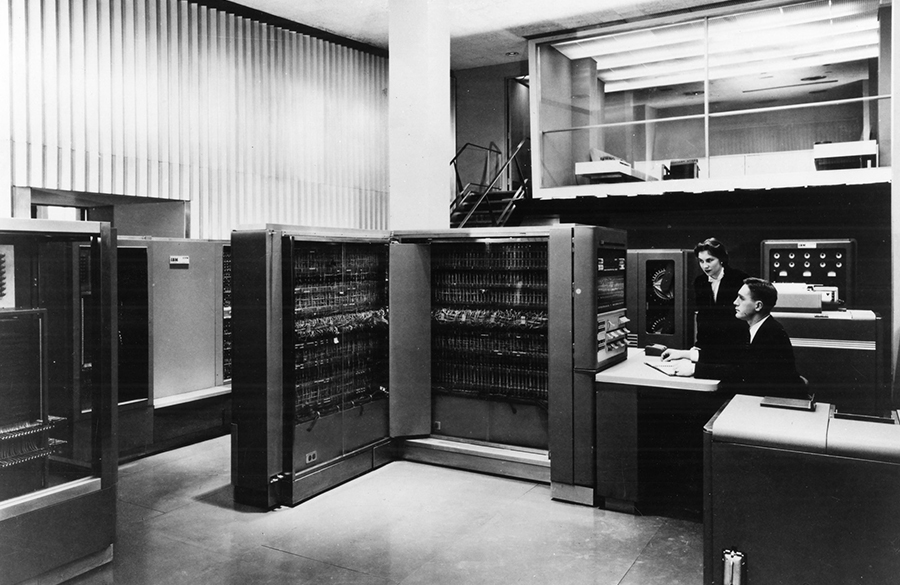Robots vs Humans.
Who Should You Trust
With Your Translating?
We explored the pros and cons of man and machine. Here’s what we found.
Remember watching The Jetsons and Star Trek? The Jetsons family relied on robotics for day-to-day housework and tasks. What a concept! At the time, no one thought having a robotic maid was a possibility. Star Trek featured technology way beyond what most could picture as reality. But over the years, advancements in technology have allowed the use of robots to greatly surpass our keenest imaginations. Max Frisch stated in Homo Faber: A Report, “The machine has no feelings, it feels no fear and no hope…it operates according to the pure logic of probability. For this reason I assert that the robot perceives more accurately than man.”
We explored how this belief applies to translation and localization of content, and if it’s time you traded in your human translators for machines.
Origins
The translation of human language by machines existed only in the imaginations of fiction writers since the 17th century. Not until the early 50s were these dreams made a reality. In 1954, a collaboration by IBM and Georgetown University [i] was the first public demonstration of machine translation, and inspired endeavours around the world.
IBM’S ELECTRONIC BRAIN FROM 1954
In the late 90’s, automated machine translation grew rapidly with the need to adapt content for internet applications (email, webpages, live stream video, news) that required real-time responses but placed less importance on quality. Through Babel Fish [ii] and later Google translate, the need for machine translation services grew, turning it into a mass-market product.[iii]
Current State
The use of automated machine translation continues to increase as global companies produce content for a broader audience. Examples of this can be seen with YouTube’s automated subtitles or website translations offered by browsers such as Google Chrome or apps like Google Translate.
Our Test
To understand automated machine translation in its current state, its usability, and its utility to content marketers, the Cquential team experimented with current automated processes versus manual processes for implementing expedited translations. As international business requires regularly updated and localized content, an effective means of translation into target languages is required to communicate new content within the very tight time window as English content updates. The challenge of automated translation is maintaining a brand’s distinct voice, which a manual translator looks to maintain during the transcreation process. In order to test the effectiveness of automated translations, the Russian language was chosen as it is a morphologically rich language which, when translated into English and vice versa, requires reordering of words and sentences for native speakers to understand.
Key Learnings
Using two common corporate automated machine translators, Google and Microsoft, Cquential set out to translate a 10,000-word consumer-oriented website from English into Russian. It was discovered that the quality of automated translations was not acceptable “as is.” Google required on average 70% significant editing. Some translations were outright nonsensical or too literal and others were clumsy and awkward. Brand terms, city and street landmarks needed to be adjusted. Microsoft overall had the same issues as Google yet their translations were comparably of a slightly lower quality.
Automated machine translation is excellent for cost and time savings where quality of translation is not the highest priority. For global consumer brands, where content is everything, this is simply not good enough. To properly communicate to local regions, human editors are still required to make content understandable and relatable. When machine translation is implemented as the sole means of content localization, editors are required to create a brand dictionary for automated machine translation software to learn specific language idioms and brand terminology. Furthermore, it will require constant tuning to adapt to evolving lingo of each region, and prevent the target language content from sounding antiquated.
Conclusion
Even if machine translation is implemented as a complimentary first step within the manual human-lead translation process, the editing time required is not likely to provide significant cost savings as compared to a strictly human process for global brands with a sophisticated voice and high quality content standards. Until proper artificial intelligence for automated machine translators is created and perfected, human translators will continue to be the best means for brands to connect with their global audiences.
2020 Update
In May of 2020, we re-ran this test to determine if there had been any improvements in the quality of machine translations. The same, or very similar pages, were resubmitted to the same machine translation tools. Then, the translation results were compared with the tests conducted in 2017. Thankfully, there have been significant improvements in the overall quality of the 2020 translations. In the previous tests the translation results were simply not acceptable, as we deemed about 70% of the content was still in need of extensive human editing. In the 2020 test, the conclusion was that about 40 to 50% of the content needed human editing, and the edits needed were not nearly as significant as those found in the earlier tests. This provides some cautious optimism for the future of machine translation for brand marketers.
By uploading a glossary of current terms and translation memory content of 10,000 words, it is reasonable to assume the quality of translations can still be improved drastically. As we move toward machine translation services, minimal editing by humans will likely still be necessary, but the hope for the future is that the combination of machine translations and human editors can become a cost-efficient approach.
If you have inquiries, or would like research notes, please reach out. You can stay in the loop as we update the study with more information and further learnings as they become available. Until then, don’t fire your translators; they’re still much better than robots.
References
[i] https://web.archive.org/web/20200605055056/http://www.hutchinsweb.me.uk:80/GU-IBM-2005.pdf
[ii] https://www.babelfish.com/
[iii] https://web.archive.org/web/20210227154033/http://hutchinsweb.me.uk/History.pdf
 back
back





